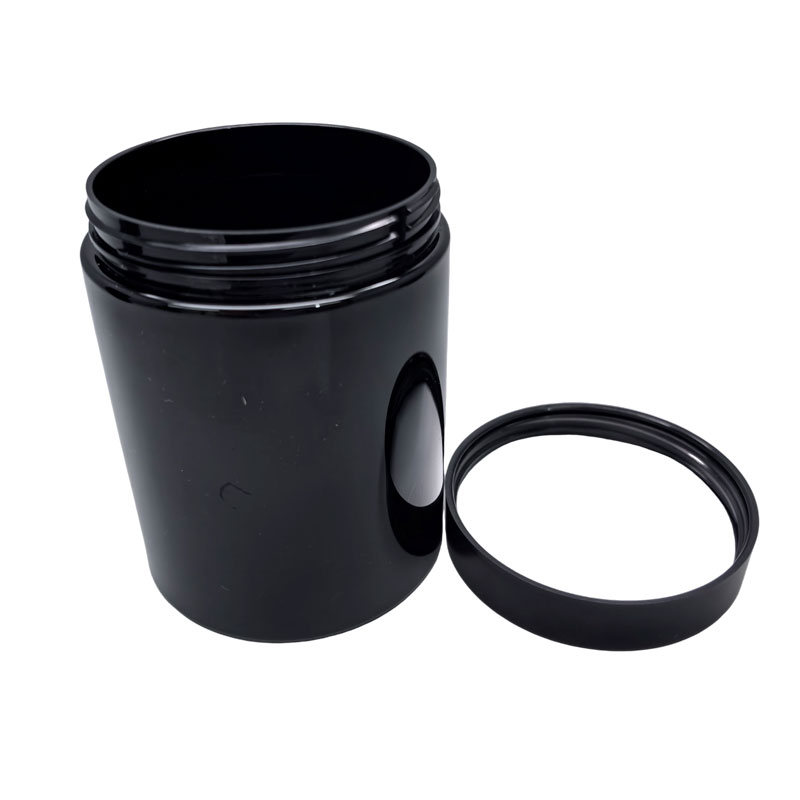Clear PET Plastic Jars vs. Glass Jars: A Comparison of Durability and Safety
2024-06-29
When it comes to packaging solutions in the food and beverage industry, both Clear PET Plastic Jars and glass jars have their own set of advantages and disadvantages. While glass jars have been a traditional choice for many years, Clear PET Plastic Jars are becoming increasingly popular due to their unique benefits. In this blog post, we'll compare Clear PET Plastic Jars and glass jars in terms of durability and safety, helping you make an informed decision for your packaging needs.
Durability
Impact Resistance
Clear PET Plastic Jars:
- PET (polyethylene terephthalate) plastic is known for its high impact resistance, making these jars less likely to break or shatter when dropped or subjected to rough handling. This makes PET jars an excellent choice for environments where breakage is a concern, such as in transport, retail, or home use.
Glass Jars:
- Glass jars are prone to breakage and shattering upon impact. Although they offer a premium look and feel, their fragility can lead to product loss and safety hazards if they are dropped or mishandled.
Weight and Portability
Clear PET Plastic Jars:
- PET jars are significantly lighter than glass jars, which makes them easier to handle, transport, and store. The reduced weight can also result in lower shipping costs and a smaller carbon footprint.
Glass Jars:
- Glass jars are heavier and can be cumbersome to transport and handle, particularly in large quantities. The additional weight also contributes to higher shipping costs and increased energy consumption during transport.
Safety
Chemical Safety and Contamination
Clear PET Plastic Jars:
- PET is a food-safe material that does not leach harmful chemicals into the contents. It is also resistant to acids and oils, making it suitable for a wide range of food and beverage products. PET jars are also BPA-free, addressing concerns related to potential health risks.
Glass Jars:
- Glass is an inert material that does not react with food or beverages, ensuring that the contents remain uncontaminated. This makes glass an ideal choice for products that are sensitive to chemical interactions. However, the risk of contamination can arise if the glass jar breaks, potentially leading to glass shards mixing with the product.
Tamper-Evidence and Seal Integrity
Clear PET Plastic Jars:
- PET jars can be easily designed with tamper-evident features, such as shrink bands or induction seals, providing consumers with confidence that the product has not been tampered with. Additionally, PET jars offer excellent seal integrity, ensuring the contents remain fresh and uncontaminated.
Glass Jars:
- Glass jars can also be equipped with tamper-evident features, but they may not be as straightforward or cost-effective to implement as with PET jars. The integrity of the seal in glass jars is generally high, but the risk of breakage remains a concern.
Environmental Considerations
While not directly related to durability and safety, it's worth noting the environmental impact of each material.
Clear PET Plastic Jars:
- PET is recyclable, and many facilities accept PET plastic for recycling. However, the recycling rate for PET can vary, and not all PET plastics are recycled into new products.
Glass Jars:
- Glass is 100% recyclable and can be recycled indefinitely without loss of quality. The recycling process for glass is well-established and widely available. However, the energy required to produce and recycle glass can be higher compared to PET.
Conclusion
When comparing Clear PET Plastic Jars and glass jars in terms of durability and safety, PET jars offer several advantages. They are highly durable, lightweight, and resistant to breakage, making them a safer option in many scenarios. PET jars also provide effective chemical safety, seal integrity, and tamper-evident features. However, glass jars remain a strong contender due to their chemical inertness and recyclability.
Ultimately, the choice between Clear PET Plastic Jars and glass jars depends on the specific needs of your product, the handling and transportation conditions, and your environmental considerations. By understanding the strengths and limitations of each material, you can make an informed decision that best suits your packaging requirements.



